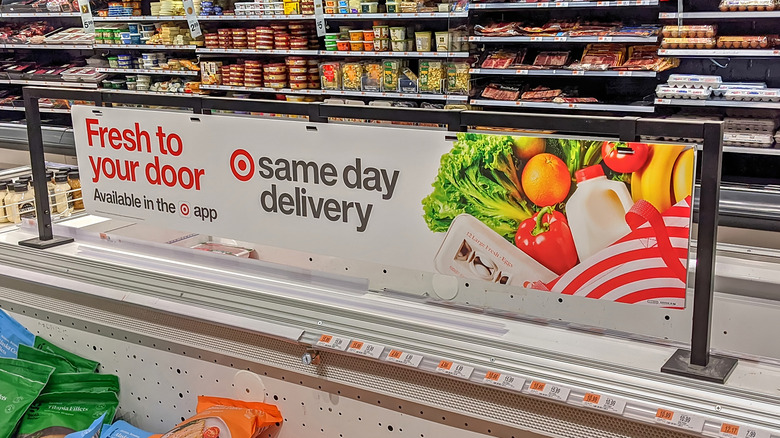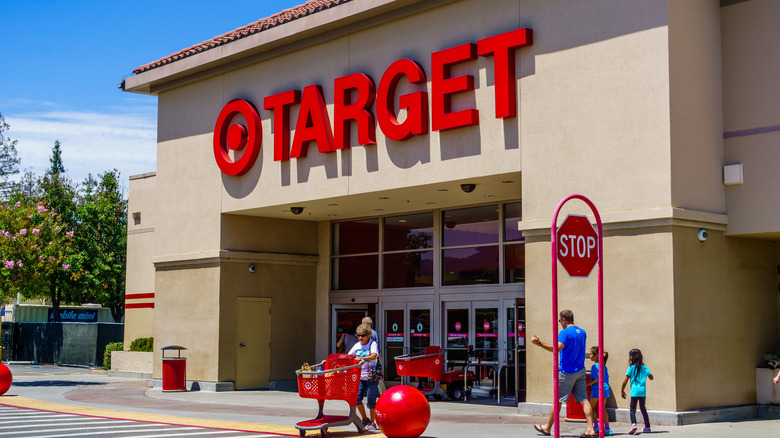The Real Reason Target Is Shifting Its Focus Toward Groceries
Target may soon begin to shift its inventory to focus more on groceries and "essential household products," after its newly revealed second-quarter earnings showed the big box store missed the mark on its revenue goals by a longshot. According to CNN, after seven consecutive quarters of growth, Target reported its second straight quarter of diminishing profits. Supply chain issues and severe inflation have caused inventory problems for the Minneapolis-based retailer, leading to a shocking 90% decrease in year-to-year profits from July 2021.
The news was not all bad for Target though. CNBC reports that while the brand's profits plummeted, improved sales indicate that a particularly high number of customers are now flocking to areas of the store with fewer big-ticket items. Most notably, these include the grocery, beauty, and household essentials aisles. This mirrors a similar trend seen by Walmart this week, which also reported a less-dramatic decrease in profits while simultaneously seeing an increase in grocery and wellness purchases.
CNBC also notes that both big-box chains found themselves with more inventory in "discretionary" categories like electronics and apparel than they could sell this spring when the war in Ukraine compounded with the leftover pandemic supply chain delays, sending gas and food prices skyrocketing. In order to clear space in their warehouses, the retailers were forced to cut prices on the discretionary categories, which naturally have higher profit margins than food and home essentials.
It's part of a larger trend
This shift in consumer habits is leading Target to reconsider its inventory going forward. Target CEO Brian Cornell noted that while Target still has $15.32 billion worth of inventory, it is "a more favorable mix" that skews toward high-frequency purchases like groceries, household essentials, and seasonal merchandise (via CNBC). Target also announced it will be investing more in its same-day delivery service to cater to online shoppers (per PYMNTS).
Big-box stores will likely see their grocery business thrive as inflation continues to send people searching for discounts. While the Bureau of Labor Statistics reports that inflation decreased slightly to 8.5% in July from its peak of 9.1% in June, Newsweek notes that the overall figure does not reflect the reality at the grocery store, where costs are 13.1% higher than at this time last year. Fox Business notes that this drastic increase has led some shoppers to seek out deals by joining store loyalty programs, while others are simply switching brands or stores altogether.
While this switch subsidized some of the losses Walmart sustained from its discounting of discretionary items, it did less for Target, as CNN notes that the smaller competitor is more reliant on discretionary categories and has less shelf space dedicated to groceries. In 2017, Target began a deeper dive into the grocery space. However, it may now have to reconsider expanding that market again as it moves to rebound in the second half of 2022.

